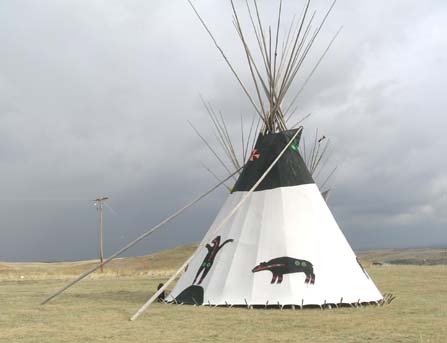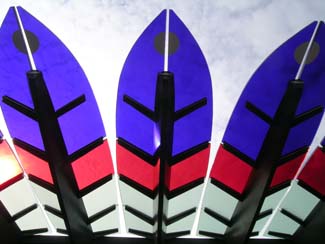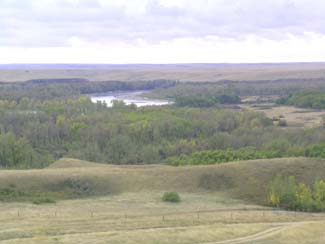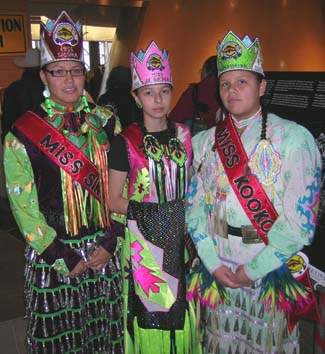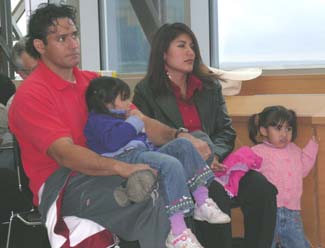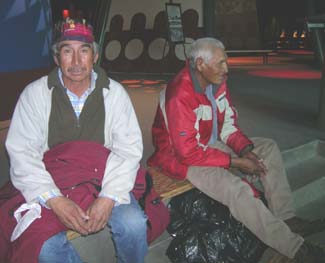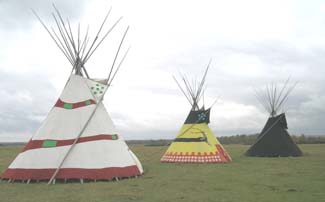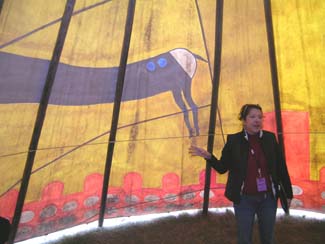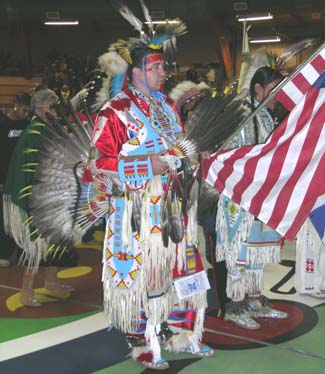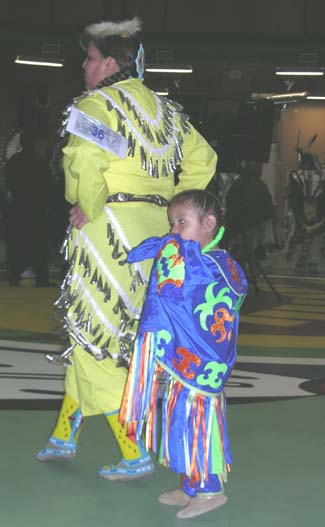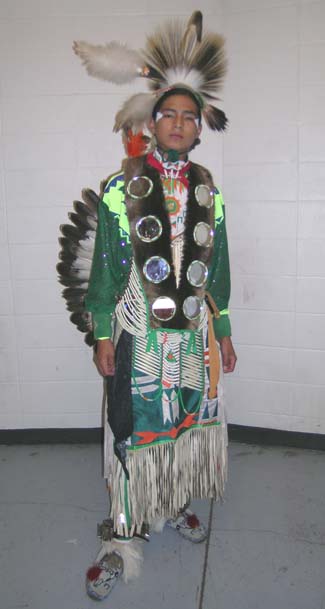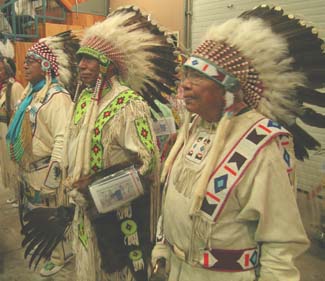As an adopted member of the Siksika Nation,
I also became aware of the very practical relationship that First
nations people have with the natural order of things. Their ceremonies,
rituals, and traditional day-to-day lives reflect this pragmatism.
And there is probably no better example of this than the native
teepee, a structure that is little understood by non-natives. I
soon learned that a teepee is a work of art, an expression of the
individual as well as the collective self. And because the lives
of the Blackfoot are an integration of the spiritual and the physical
worlds, the teepee is also a manifestation of both worlds. It is,
of course, also simple science. For people who once had to live
off the land and follow buffalo herds to do so, these deceptively
simple and natural shelters demonstrate a wisdom that one comes
by from living in harmony with the land.
If you visit the Siksika Nation, I guarantee
that you will be amazed at the art and engineering of the teepee.
Some reach heights of nearly 30 feet, with 22 feet being the average.
The designs and symbols of a teepee mirror the natural surroundings
and an inherited belief system. The images you see on each distinctly
but subtly different teepee are taken from dreams and visions of
the individual who creates the teepee. Designs of native flora and
fauna are painted on the canvas in bright, bold, and intense primary
colors. A teepee design is individulized but, given the collective
nature of the aboriginal way of life, the teepee designs are passed
on from one generation to the next. These designs may not be copied
or borrowed and it is considered disrespectful to use a family design
without the permission of one of the family members. Once a teepee
is painted and finished, families, friends, and elders gather for
an initiation ceremony where the teepee is officially transferred
and blessed by an Elder. Clusters of colorful teepees are erected
at Powwows and they can accommodate up to 20 people, sleeping as
many as 12 people.
Many aspects of aboriginal lives have been
co-opted by non-native institutions such as Hollywood, and frequently
depicted in a shallow, banal fashion. The powwow is an example of
aboriginal art and theater that is very difficult for non-aboriginal
people to appreciate because they do not have the same thousands
of years of oral history and traditions.
As I learned among the Blackfoot, the powwow
is a very significant and symbolic event in which there are many
layers of meaning. It is an important community social event and
gathering, but it is much more. A powwow is a form of theater and
high drama — some as lavish as a Broadway production —
but it is also the acting out of an entire culture.
According to Clyde Crossguns, “Powwows
are a reminder of who we were and what we are today. It’s
a celebration of our traditions and culture. It’s the time
when traditions are honored.” Being true to “Indian
time,” Powwows rarely start promptly — just like Bar
Mitzvahs. The purpose and meaning behind a powwow seems to be secondary
to frivolous concerns such as sticking to a clock. In many ways
a powwow is already “a work in progress” before its
official starting time; and this may be why there is much less of
a sense of urgency to “arrive on time.” Living on the
reserve, I had to refocus my concept of beginnings and endings.
If, as I did, you have the opportunity to
witness a number of powwows and to experience the intricacy and
complexity of their planning and staging, you begin to appreciate
the depth of meaning in the ritual dancing, costumes, and rich pageantry.
Initially you may experience sensory overload during a powwow and
you may find it difficult to get beyond the perceived repetitiveness
and randomness of the ceremony.
In many ways, a powwow is the synthesis the
aboriginal culture. It is also a brilliant display of time-honored
traditions and skills. The pwowow allows for a very high degree
of individual expression in costume, face paint, and dance. But
it is above all a collective cultural expression. It is a stirring
and highly ornate display of traditional arts and crafts. It is
one of the most colorful events you might ever experience: the dance
of brilliant colors, resplendent regalia, intricate face painting,
stupendous plumage, and breathtaking beadwork is art in action.
The artful drama is accented with elaborate and very skillful choreography,
non-stop chanting and the pounding drums that are adrenaline-producing
and endorphine-releasing.
My favorite moment, however, is the Grand
Entry. When you least expect it, the chatter and gossiping suddenly
stops; the crowd is hushed. Followed by his exquisitely dressed
entourage, the Chief (or Chiefs) enter in a solemn, slow dance followed
by flag-bearers, elders, and other dancers.
The Chief holds a sacred staff with a carved
eagle head. The eagle represents the courage and strength so innate
in all native cultures. After the victory song is sung by the drummers,
and the Elder says the prayer, the Powwow officially begins and
can last for several days. Non-stop dancing and chanting continues,
while hand games and endless socializing take place. With big prize
money at stake, dance competitions like the chicken dance, fancy
shawl, and the grass dance, are resplendent with elaborate attire;
each outfit more spectacular than the last. Jingle dresses covered
with curled silver tobacco lids glisten and reflect the light, making
delicate percussion sounds. Elders make elegant statements in their
traditional buckskin dress and war bonnets. Exquisite dance shawls
beaded in graphic bold patterns are each a themed and individual
work of art. Their long fringes sway rhythmically keeping a visual
pace with the pulsating drums. The drums and chanting cause a reverberation
that can be felt throughout your entire body.
And then there is the communal feast where
everyone, native and non-native, are made welcome and invited to
commemorate the native heritage by partaking in a traditional meal.
These feasts are usually sponsored by a family or drum group and
feature traditional food including Saskatoon berry soup, beef stew,
bannock bread, pemmican, and “Indian popcorn,”the latter
a delicacy of flavorful fried fat.
Emphasizing the importance of and respect
for eldership in the native worldview, the Elders are always served
first. The Blackfoot revere and pay close attention to life-cycles
and the cycles and patterns of nature. What I learned living among
them, was to recognize and integrate their visions into my own.
For me, life on the Siksika Nation reservation was the essence of
artistic expression.
Editing, design, and
photographs by Bob Fisher
